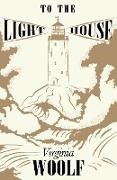Read more
Described by Virginia Woolf herself as 'easily the best of my books', and by her husband Leonard as a 'masterpiece', To the Lighthouse, first published in 1927, is one of the milestones of Modernism. Set on the Isle of Skye, over a decade spanning the First World War, the narrative centres on the Ramsay family, and is framed by Mrs Ramsay's promise to take a trip to the lighthouse the next day - a promise which isn't to be fulfilled for a decade. Flowing from character to character and from year to year, the novel paints a moving portrait of love, loss and perception.
Bearing all the hallmarks of Woolf's prose, with her delicate handling of the complexities of human relationships, To the Lighthouse has earned its reputation - frequently appearing in lists of the best novels of the twentieth century, it has lost not an iota of brilliance.
About the author
Virginia Woolf (1882-1941) was an English writer, born in South Kensington, London. Known for her feminist writings and pioneering work with the narrative style of stream of consciousness, Woolf is widely considered to be one of the most influential modernist writers of the 20th century. Some of her most famous works include Mrs. Dalloway, 1925, To the Lighthouse, 1927, and A Room of One's Own, 1929.
Summary
Described by Virginia Woolf herself as 'easily the best of my books', To the Lighthouse is a milestone of Modernism. Set on the Isle of Skye, the narrative centres on a promise which isn't to be fulfilled for a decade. Bearing all the hallmarks of Woolf's prose, To the Lighthouse has earned its reputation - it has lost not an iota of brilliance.

